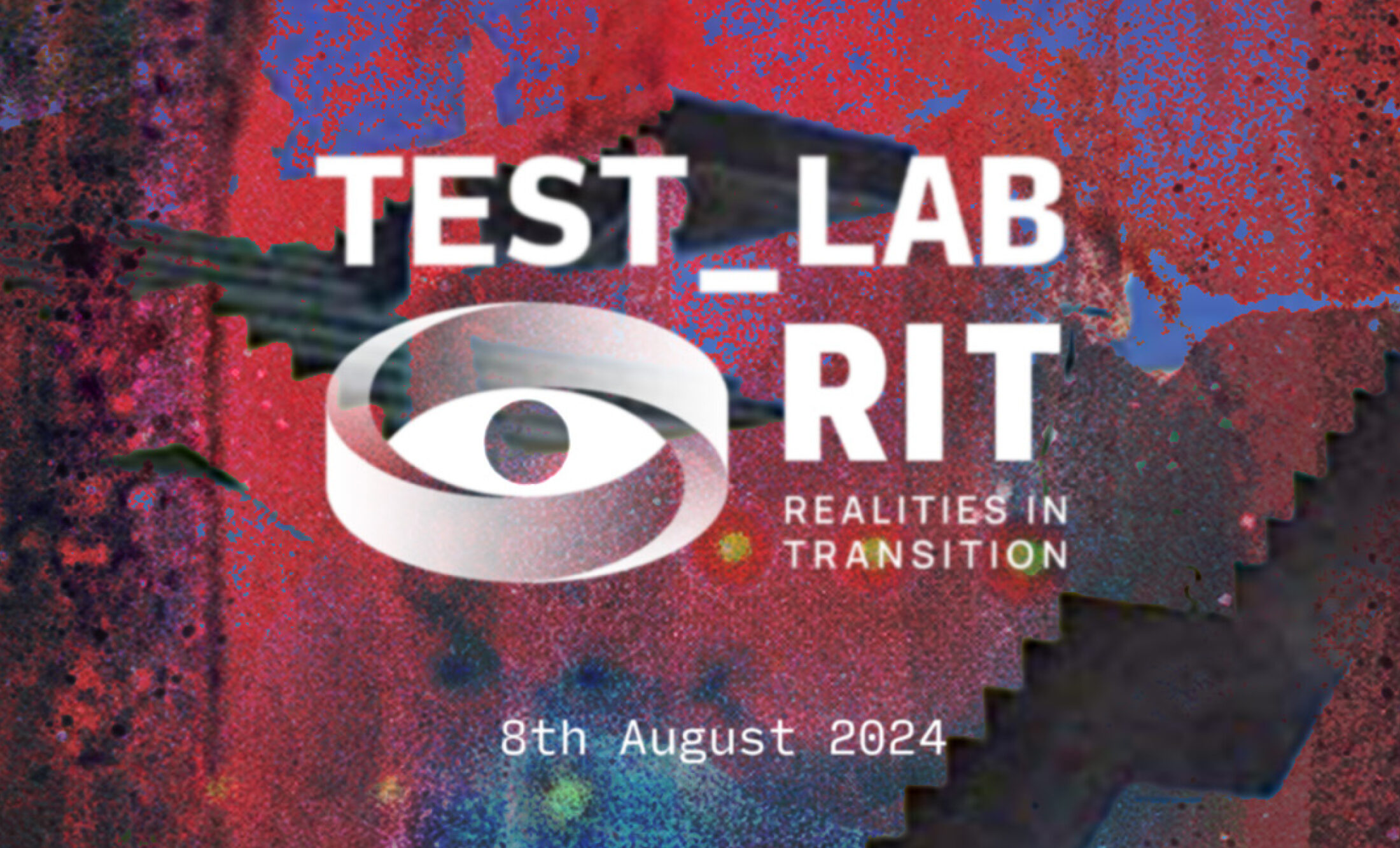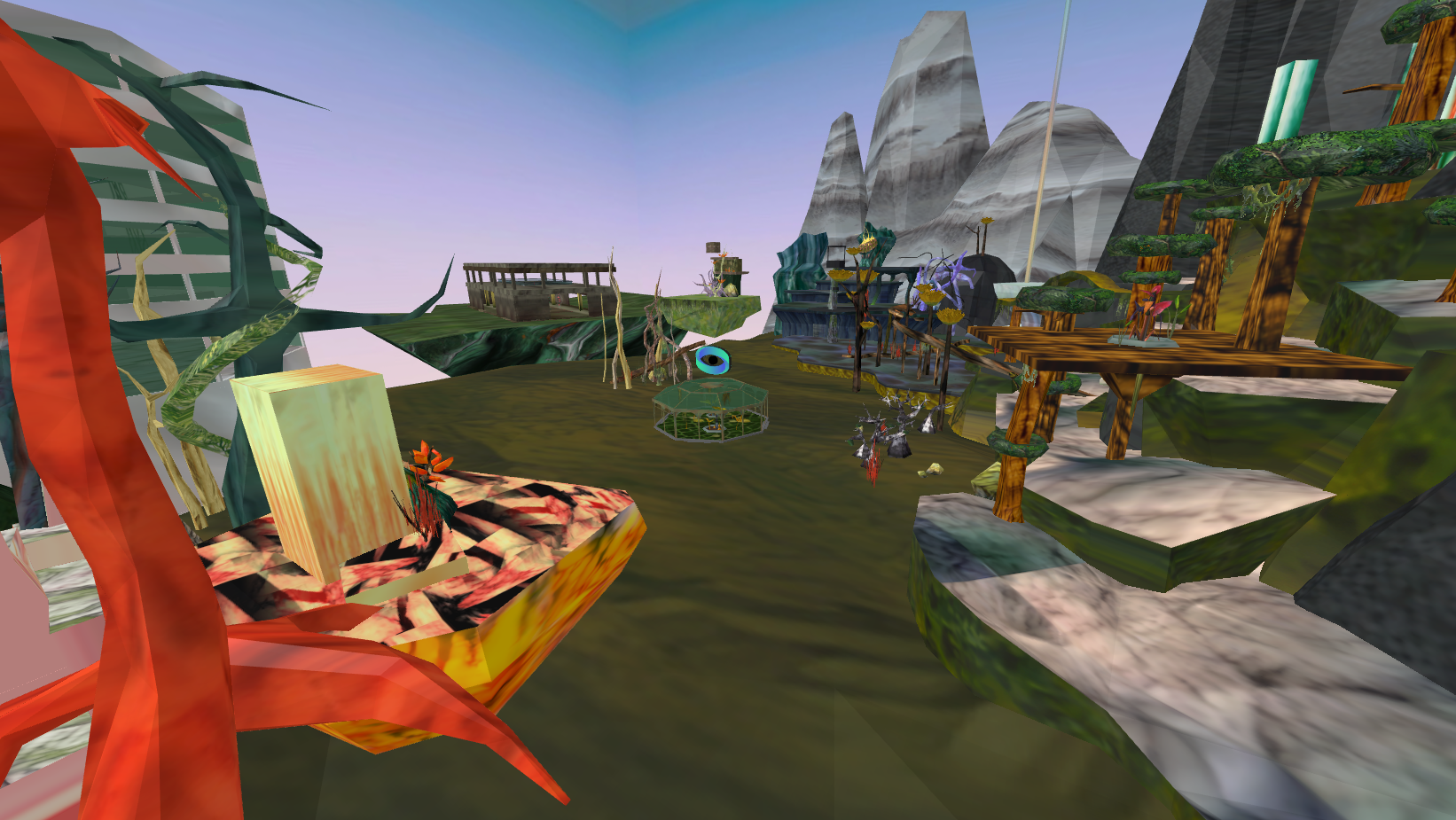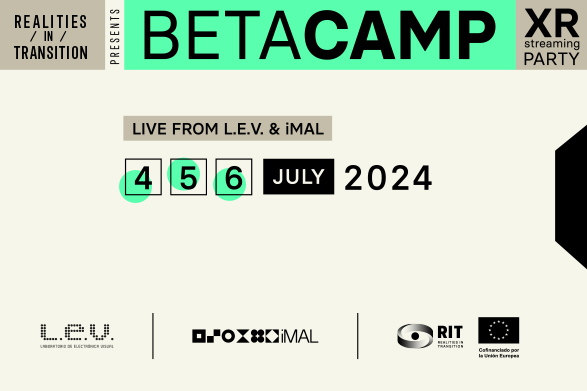5/7 – Eva Iszoro
Eva Iszoro was one of the 7 selected artistic project for the first #RiT artistic residency, back in May 2023, in V2_ (Rotterdam). In this framework, Dark Euphoria asked her about their relationship to XR, their artistic path and favorite tools. With this 5 out of 7 special interview, discover Eva Iszoro’s unique look on eXtended Realities…!
Dark Euphoria | I
Dark Euphoria | Interviewer: Céline Delatte – Looking at your artwork, we definitely can feel multiple reality layers. So, to begin this interview, I’d be curious to hear your definition of eXtended Realities…
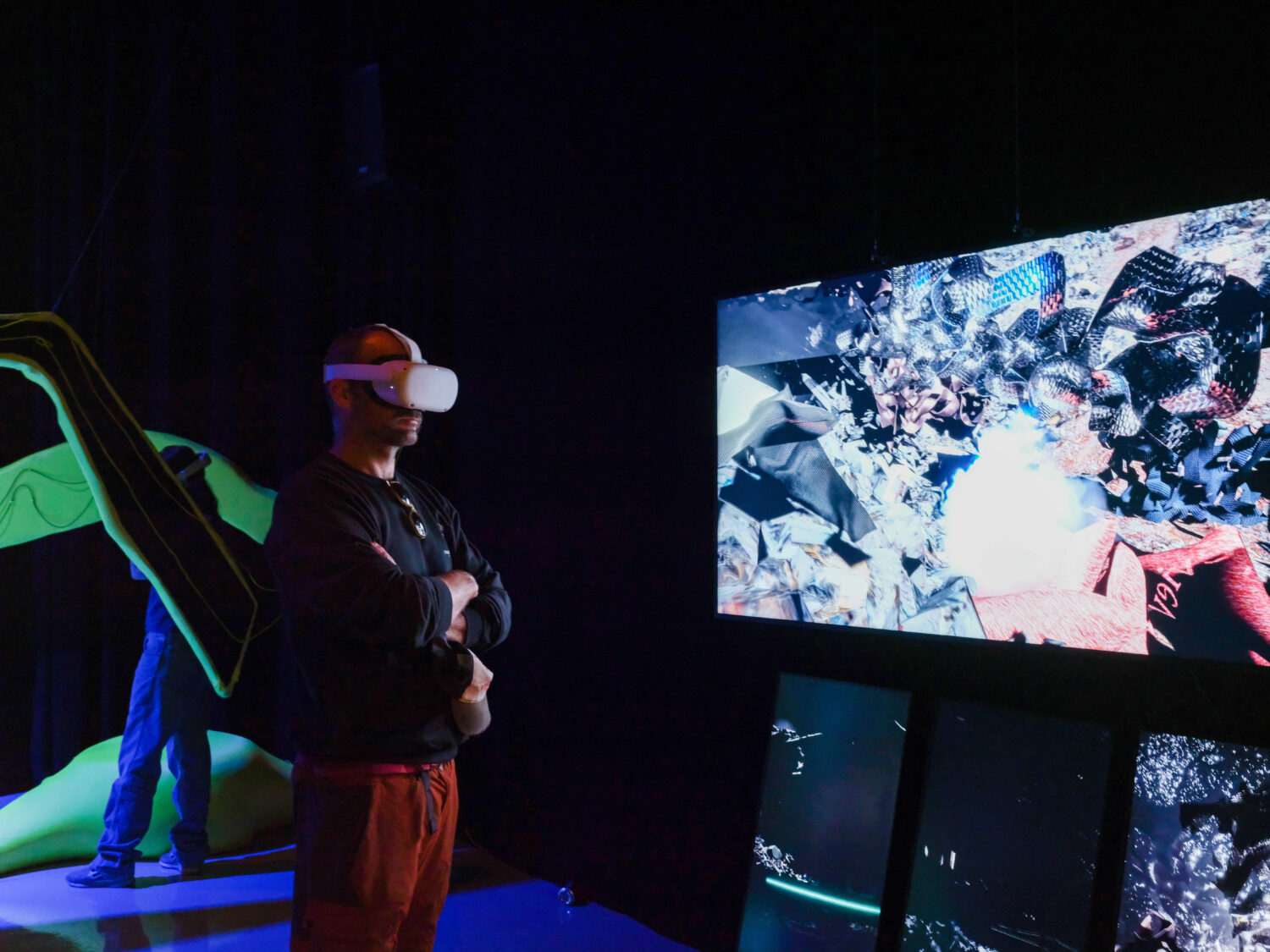
Dark Euphoria | I
Eva Iszoro: It’s a way of adding new layers and new features to physical/daily life reality. It’s like opening doors to new worlds that are part of the same bigger world. It’s a global concept that consists in incorporation of the unreal into the real world, in different ways. And, after, inside, we have virtual reality, augmented reality, AI, and so on…
Dark Euphoria | I
C.D. – It’s a way of extending reality, but you have so many different ways actually…
E. I. – Some people, when you say virtual reality, they think about the VR goggles. I don’t agree with that. Virtual reality, it’s just that it’s not real. It was created in a digital way. But it’s not always necessarily immersive. It’s complex. Sometimes the border between real and unreal is confusing. In my last work: “Expecting Forward”, I have incorporated a demolished building in the scene. It was a real building but it was scanned. I just bought it, and I put it inside.
(…)
That’s why we try to explore and try to find ways of bringing topics together. To know a bit more about how we want to evolve and what we can do with that. What are the possibilities, but also the challenges and the dangers. Because it can be very dangerous. It can be used in bad ways or good ways. It’s like everything in life actually.
C. D. – Indeed, always depends on the use… Thanks for this great intro! Now, could you tell us a bit more about you?
E. I. – My name is Eva. I’m a visual artist, fashion designer, architect and researcher in the field of experimental and creative pattern cutting. I have my own method that I decided to denominate “Accidental Cutting”. It’s focused on obtaining completely new volumes. Original volumes that didn’t exist before, through random accidental and abstract patterns, flat patterns. So it can be used in fashion, but can be used in art, like for new sculptures or design, as well.
I have a fashion brand as well, “Accidental Cutting”. And I currently present collections at London Fashion Week. I have already presented six collections. I started presenting collections in the period of COVID 19; in London in September, 2020. I proposed a virtual collection and they accepted it but I was not an expert at all in virtual things.
Dark Euphoria | I
C.D. – Had you ever met XR before that?
Eva I.: I´m an architect as well, I did architecture, so I was used to some 3D software, like AutoCad / Rhino – and 3D Studio Max. But it was many years ago. My practice of experimental pattern cutting / method, it was first by hand. It was not necessary to do it virtually. I was even against doing it with a computer. Because one of the important things of experimental pattern cutting; it’s that it’s very intuitive. You can get those volumes very easily. You don’t need to have big knowledge of pattern cutting to get very complex experimental volumes with my method.
Normally in design, the classical way, not always of course, but classically, the designer imagines something, has the inspiration, and after works to get it. This doesn’t exist in my method. The mind doesn’t participate in the process of designing at the beginning.
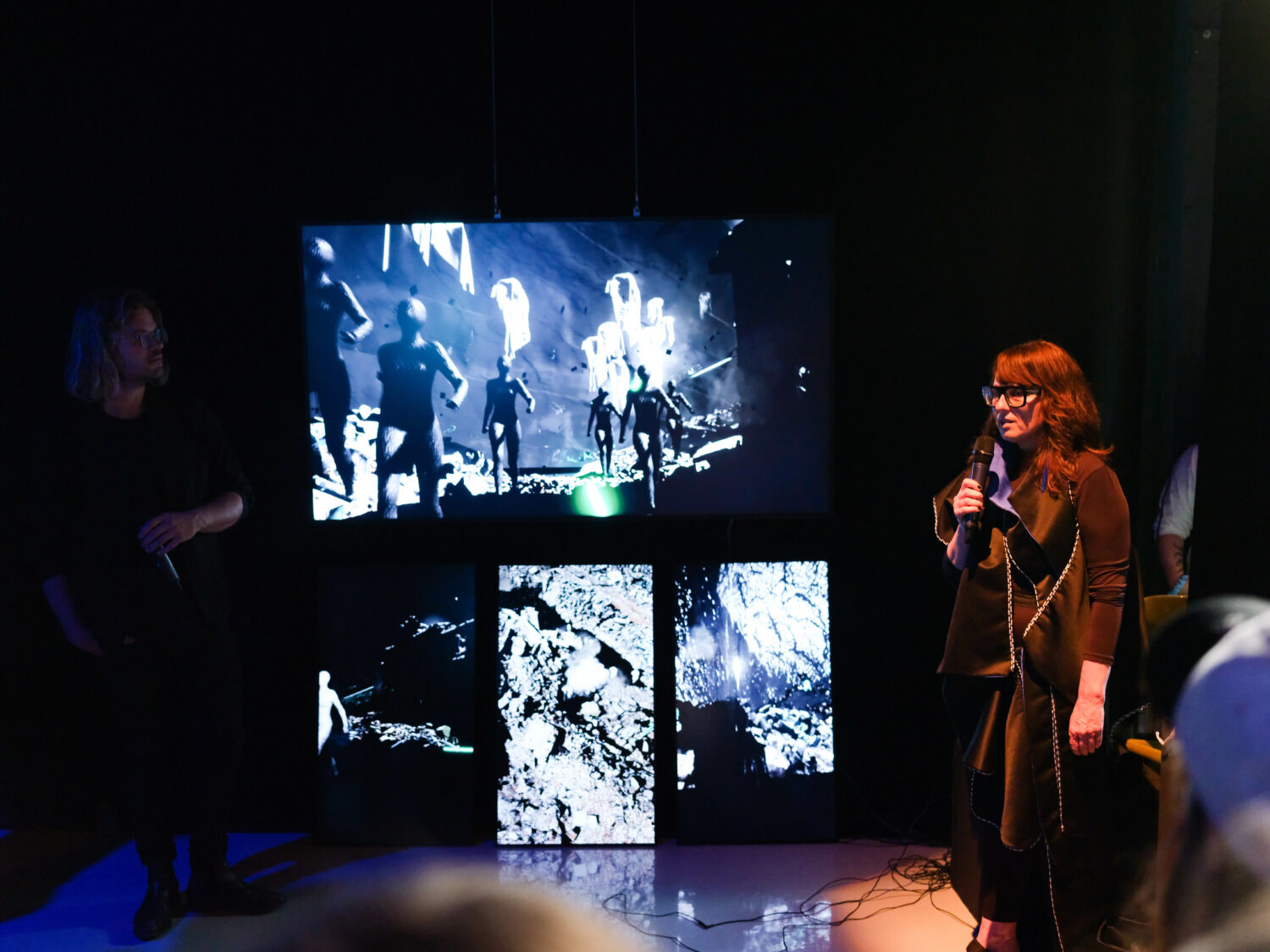
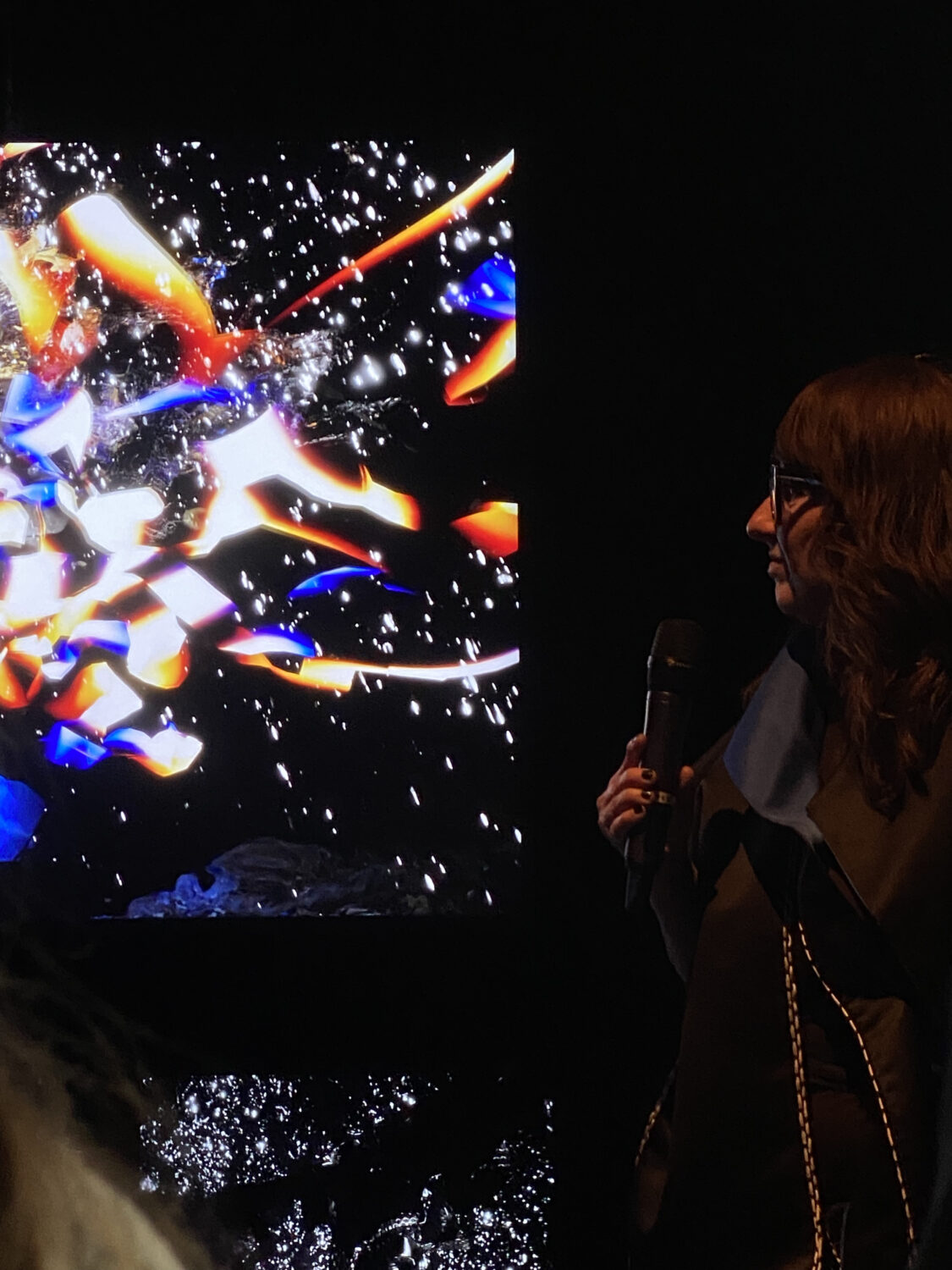
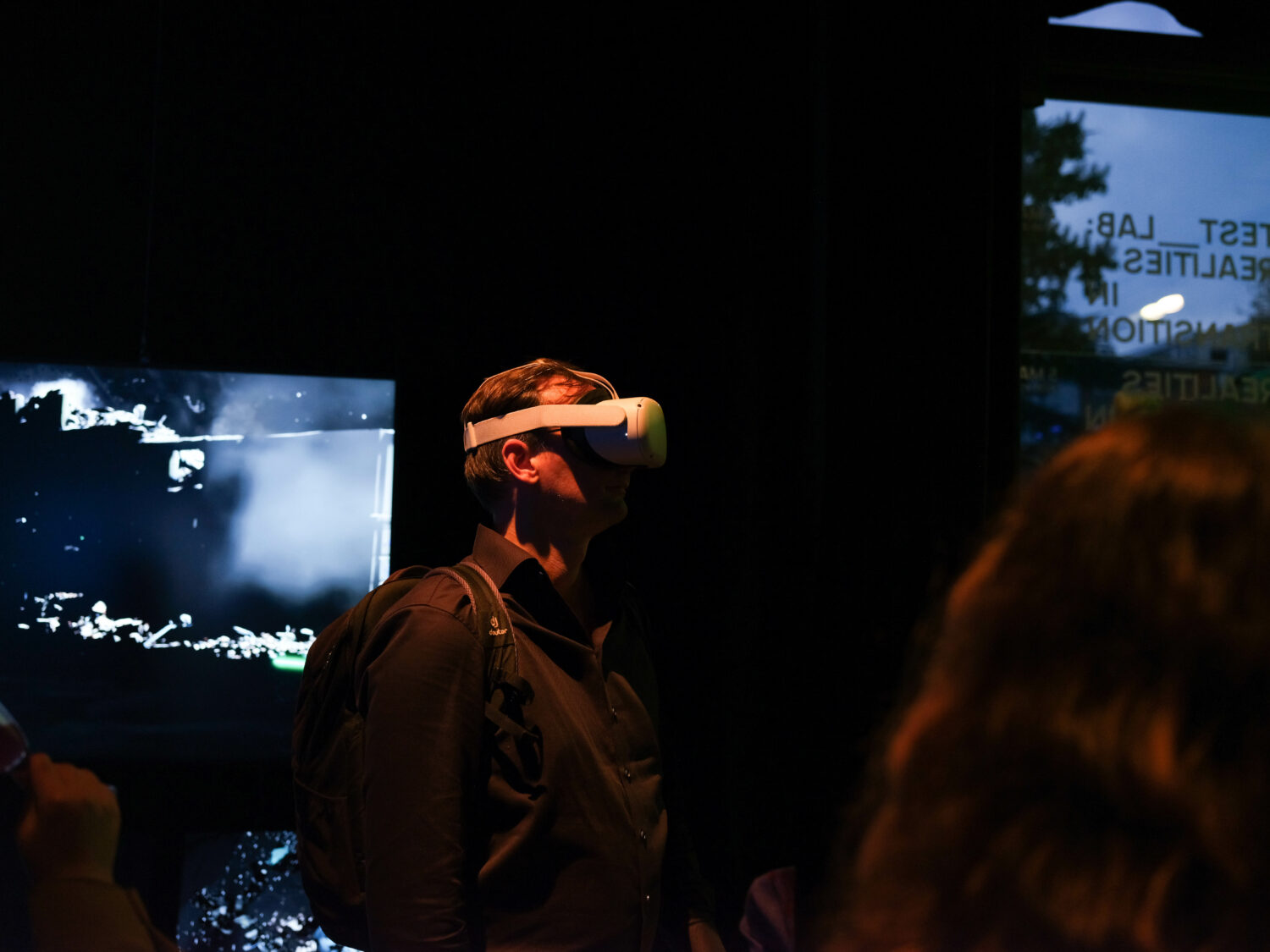
Dark Euphoria | I
C.D. – You actually design the process.
Yes, and through the process, you get those unexpected volumes. But when you start the research, you don’t know what you will get. You are looking for something, you just find something. That’s completely different. You don’t look for a result, but you get a result. Maybe you like it or you dislike it, or you use it, or you don’t use it… The method is focused on obtaining original and non-existent volumes. (…)
Dark Euphoria | I
C.D. – What tools do you use in order to create?
During the pandemics, I started to learn software to create volumes with flat patterns, like CLO 3D. There is also Marvelous Designer, but it´s of the same owner of CLO 3D and has some little differences, people say that CLO 3D is more for fashion designers, has more production options, and Marvelous Designer is more for video game designers, I don´t know the exact differences because I use only CLO.
I realized that it’s very easy to work in virtual and I loved it from the beginning. I started in March 2020, and I applied to London Fashion Week maybe in April. Like one month after. I proposed my virtual show, and they accepted it. (…) This software is intuitive. So I was able to do all the virtual garments, but I was not able to do all the the animations, the movements. I needed help for this for the first show… But then I decided that I want to do everything myself to have bigger creative freedom and I had to learn some additional applications for the five next shows. I think at the moment, I manage about 10 different engines and softwares (CLO 3D, Mixamo, Blender, Unreal Engine, Maya, ZBrush, ZWrap, PhotoShop, Metashape, Rhinoceros). For example, to make the hair, the best one for me is Maya which has a plug-in called XGen. I the moment when I had the feeling that I only need to learn two more to have enough control, specifically: Side FX Houdini and Cinema 4D, AI applications disrupted strongly (Midjourney, DALL-E 2, NightCafe etc.), and I think they are very interesting for my practice too. It is a never ending story, I have the feeling that I’ll never stop learning.
The best way is to experiment. To find your own way.
Dark Euphoria | I
C.D. – And where do you actually find the resources in order to approach these softwares?
Eva I.: Everything I have learned is on YouTube or from online courses. I also have some consultants. Like, if I find a YouTuber who explains very well, I contact him directly if I have a specific problem. For instance, in Spain, I have a very good consultant. If I have a problem with Blender, I always contact Oliver from Blendtuts, and for Maya XGen, ZBrush and ZWrap I ask Jorge for help from the UOD Youtube channel.
When I was young, when I wanted to learn a software, I had to go to a specific academy or buy a book. Now with the internet, it’s really incredible.
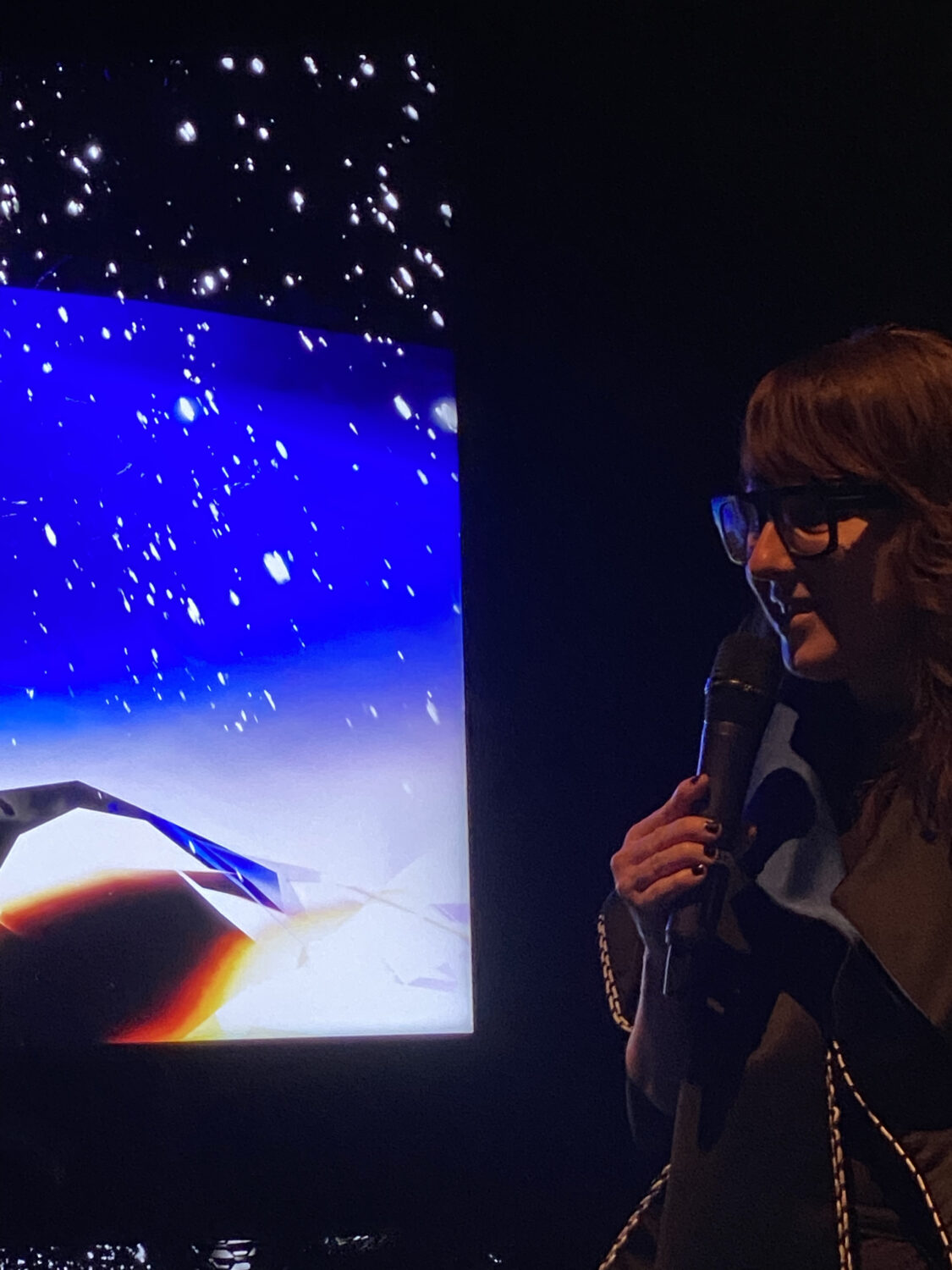
Dark Euphoria | I
C.D. – What advice would you give to creators who’d like to start with XR?
For me, I didn’t program that I would learn this. It happened accidentally, just because of the pandemic. I knew before that a software for virtual fashion existed, but I never had enough time to start with it, and then, when I was staying home, it was finally the moment to do it.
My advice is to be passionate about something. I think some things just happened along the way. My first goal was to make virtual garments. Not necessarily to make art. When I started to explore virtuality, the most interesting thing is that you can make things that are not possible in our physical world. We don’t have gravity and other material or physical limitations … The possibilities are amazing. The thing I’m interested in it’s to search the unknown, the inexistent. With my pattern cutting method I get volumes that didn’t exist in fashion history. Nobody can say that I have copied something, you know, and for me, VR is exactly the same.
(…) So, my advice is to be passionate. Sometimes you cannot program. It’s just by the way, on the way, and by the corner. (…) I insist on experimental things. It’s not rational sometimes. I love errors.
Another piece of advice is to work a lot. If you make a lot of things, you can learn more things. Experiment to be experimental and reach the unknown. Do not think too much, just do, do, do and learn doing.
Dark Euphoria | I
C.D. – Where do you think XR is headed and where would you want it headed?
I think XR is our complimentary world. For example, in architecture, when you have to present a competition; they used to ask for a real model maquette. In some countries, you even had to send this real model for the jury. But now it’s possible to send a VR version and the members of the jury just put on the headset and see the building, and even a politician can see the proposal much better… So the unreal implementation becomes necessary in our actual real world. (…) It’s in medicine, it’s in architecture, and of course it’s in art as well. XR helps in many things. And, where is it going in the future? I think now we are in an orthopedic time, because we have all these big uncomfortable assets. (…) When the computer started, the screens were like very big boxes. 20 or 30 years ago, they were 50 kg. I think in VR, we’re now in this moment. And it’s going to be faster. We’re gonna have some very transparent devices, or a chip, or maybe technology based in holograms. I would like it to go to holograms, to be kind of common words. It probably would be very dangerous but I imagine installation, exhibition, fashion shows where you just make people sit in the park and it goes; and you cannot distinguish what’s real and what’s not real. I think it goes in this way, and I think it will be less orthopedic as it is now. The technology goes in that way. In any moment a new technology can appear and turn everything upside down, as it’s happening now with AI applications. In general, in my case, the biggest goal is to search for non- existent and explore things that we cannot do in the physical world.
Exciting!



